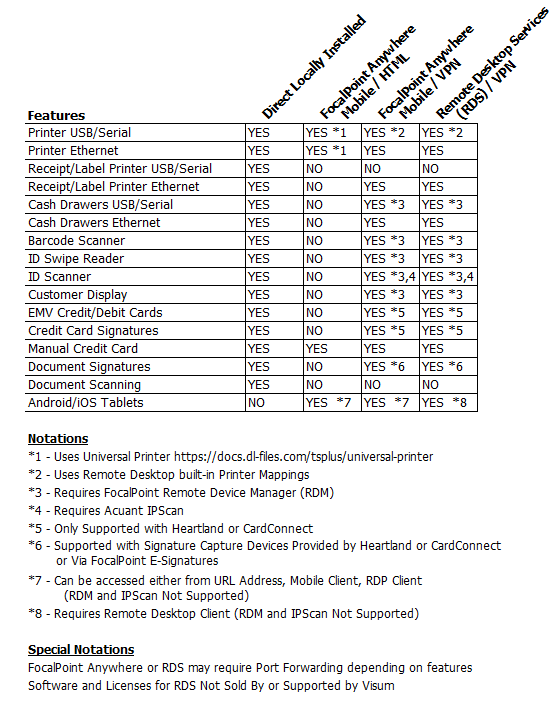Many options are available for remote access to your FocalPoint Software through any Android or iOS device, or a remote laptop to write contracts and work orders, process returns, capture signatures, and more, all on the go!
Whichever option you use, you will always get the same great FocalPoint screens, reports, and functions ...no pared-down or watered-down versions.
Windows Server Remote Desktop Services
Microsoft Windows also has a native Remote Desktop Service available. Site requirements to implement MS Remote Desktop Services vary, and should be determined on a case by case basis by your IT service provider. When working with your IT service provider, please discuss the number of users/devices that will be connection remotely, as this will affect the resources necessary on the "server" to function properly. Visum will be able to provide you with hardware and software requirements specific to FocalPoint software which you can use to help determine the overall Remote Desktop needs of your business.
Similar to FocalPoint Anywhere, there are clear speed advantages over a typical VPN implementation. All processes are much more responsive, as most of the work is being done on the server, and data transfer between Server and Client PC's are minimized. Installations and updates are also streamlined, as FocalPoint is only being utilized on the server. When FocalPoint is updated on the server, all client PC's recognize the update.
In order for FocalPoint to function properly within a remote desktop environment, Terminal Services or Remote Desktop Services must be set up according to specifications outlined by Microsoft. Please note that if you use NetEPay (Vantiv/Worldpay integration) as an integrated credit card processing solution for FocalPoint, it IS NOT compatible with Remote Desktop Protocol.
Remote Control
Remote Access software like LogMeIn, Team Viewer, and so on can be used to control a local PC from a remote location. Often time you can set these options up yourself without needed assistance from your IT service provider of choice. Many of these options are free. Here’s a little light reading on this topic: http://pcsupport.about.com/od/remote-access/tp/free-remote-access-software.htm.
VPN (Virtual Private Network)
Allows others to be on your network even though they’re not in your office. VPN’s that are controlled by hardware will require router adjustments. Software VPN’s do not. Typically, you would contact an IT service provider to help you set this up. Helpful link: http://lifehacker.com/5487500/five-best-vpn-tools but there are probably many (many!) other discussions on the internet about this topic.
